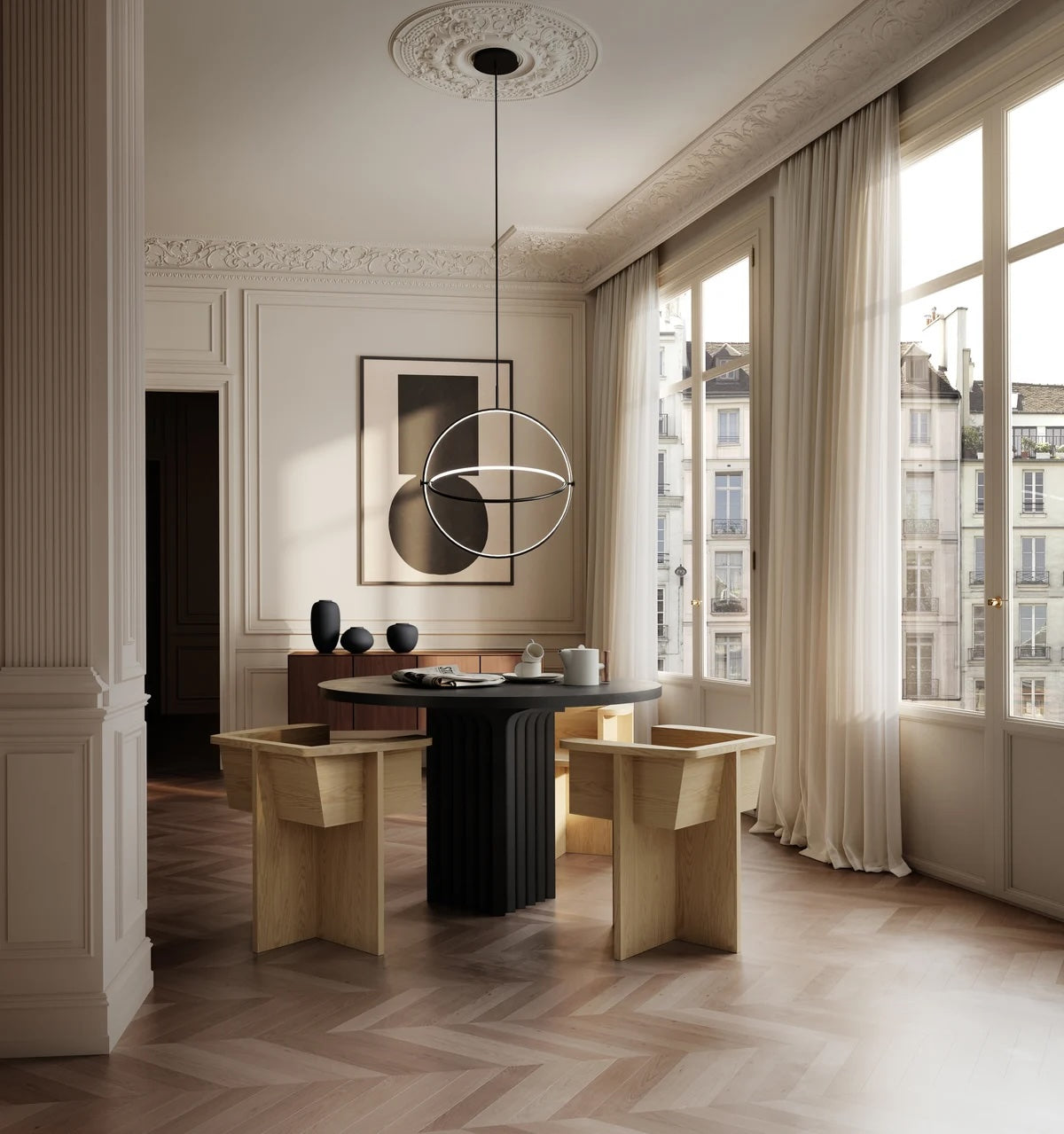
Brutalism : Bold & Unapologetic
In the world of interior design, where trends often lean toward comfort and aesthetic harmony, Brutalism makes a strikingly different statement. Rooted in architectural principles of raw functionality and material honesty, Brutalist interiors challenge the norms of softness and polish, inviting us into spaces that are stark, bold, and thought-provoking.

What Is Brutalism?
Originally stemming from the French term béton brut ("raw concrete"), Brutalism was an architectural movement that emerged in the mid-20th century. Popularized by architects like Le Corbusier, Alison and Peter Smithson, and Paul Rudolph, it focused on exposed structural elements, rough textures, and monolithic forms. When translated into interior design, Brutalism strips a space down to its essence. It prioritizes utility over ornamentation, featuring materials in their most unrefined state — think concrete, steel, glass, and reclaimed wood.
Core Elements of Brutalist Interiors
- Raw Materials - Brutalist interiors embrace unfinished surfaces: poured concrete floors, cinderblock walls, visible wiring, and aged metals. These materials are not hidden or softened — they're celebrated for their imperfections.
- Monochrome Palettes - Color schemes are typically muted: shades of gray, black, brown, and white dominate, enhancing the sculptural quality of the space. Occasionally, a bold accent — like rust or deep blue — might be introduced, but always sparingly.
- Functional Forms - Furniture in Brutalist interiors is minimalist, heavy, and geometric. Pieces often appear sculptural, carved from solid blocks of material. Functionality drives form — each item serves a purpose, and nothing is added just for decoration.
- Harsh, Yet Honest Lighting - Exposed bulbs, industrial fixtures, and stark natural light define Brutalist lighting. It’s not about creating coziness — it’s about clarity, focus, and embracing shadows as part of the aesthetic.

WHY CHOOSE BRUTALISM?
Brutalism is not for the faint of heart. But for those who crave authenticity and simplicity in a world cluttered with digital gloss, it offers a compelling alternative.
- Authenticity: Brutalism values truth to materials. There's no veneer, no illusion — what you see is what you get.
- Timelessness: Its refusal to follow trends makes it immune to becoming outdated.
- Strength: The use of durable, structural materials offers a sense of permanence and solidity.

BALANCING BRUTALISM
To avoid a space feeling cold or uninviting, some designers blend Brutalist elements with warmer touches — a Brutalist concrete wall softened by a leather chair, or a rough steel light fixture balanced with natural wood flooring. This hybrid approach allows the strength of Brutalism to shine without overwhelming the senses.
FINAL THOUGHTS
Brutalism in interior design is more than a style — it’s a philosophy. It pushes back against ornamentation, challenging us to find beauty in structure, material, and form. In a time of increasing virtual stimulation, a Brutalist space offers a kind of raw, grounding honesty that feels surprisingly fresh. Whether embraced fully or incorporated in thoughtful doses, Brutalism continues to inspire designers who dare to question conventional beauty.

For further reading… https://sabiinadesign.com/brutalism-interior-design/

